Our Instructors Collaborate With Top Tech Leaders
 Startups
Startups

 Microsoft
Microsoft
 NVIDIA
NVIDIA
Create a safety compliance system that detects helmets, vests,
gloves, and masks using object detection. Ensure workplace
safety using AI vision.
Intermediate-level. Certificate included.
 Startups
Startups

 Microsoft
Microsoft
 NVIDIA
NVIDIA
By the end of this course, you'll have the skills to build AI-powered accident detection systems and secure computer vision jobs or freelance projects.
Learn how AI ensures workplace safety by detecting personal protective equipment (PPE) like helmets, vests, and masks.
Use Python with OpenCV and YOLO or similar models to detect safety gear in real time.
Build a real-time monitoring system that checks for PPE compliance using surveillance footage.
Record PPE violations or compliance events with timestamps into a safety database for audits.
Design a visual dashboard to show live camera feed and PPE detection alerts clearly.
Finish the course and receive a verified certificate of success.

Muhammad Yaqoob is the founder of Tentosoft Pvt Ltd and a seasoned Computer Vision expert. With 10+ years of experience and over 5,000+ students taught globally, he brings deep industry knowledge and a passion for practical, hands-on learning.
Gain practical experience by building industry-relevant computer vision applications from scratch.
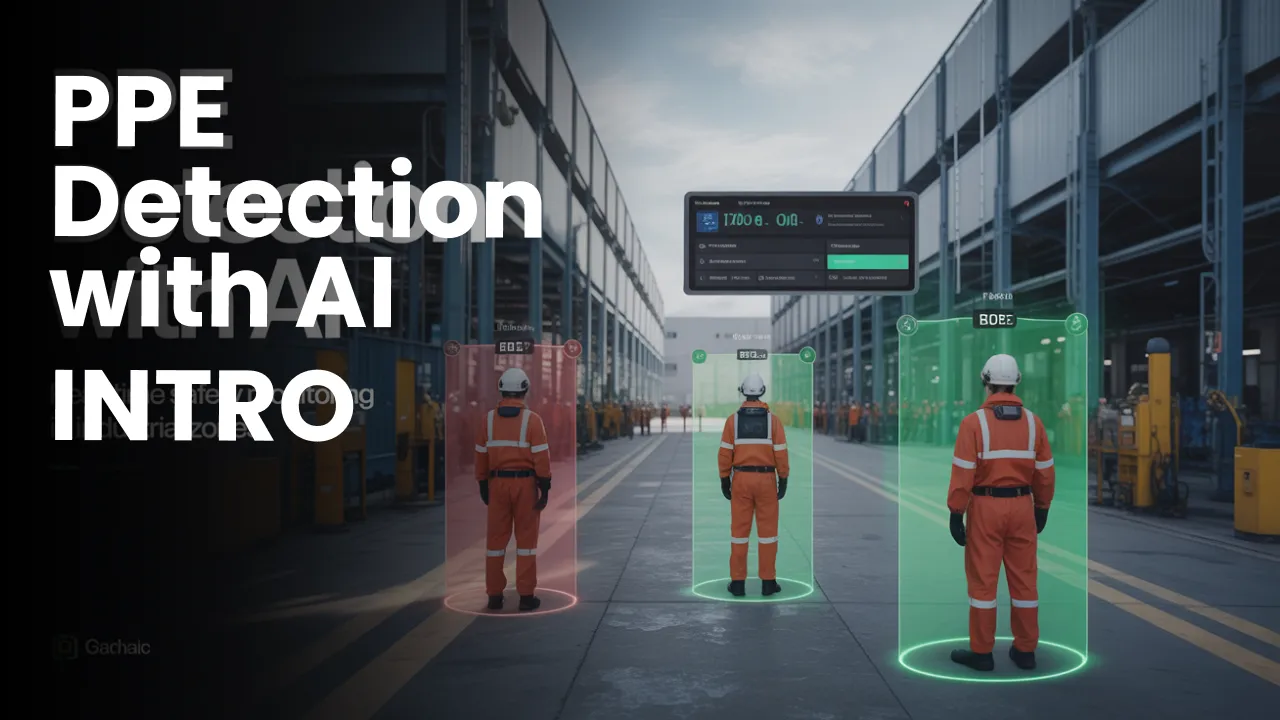
PPE Detection System is a deep learning-based approach that automatically identifies whether individuals are wearing the required personal protective equipment (PPE) such as helmets, vests, and masks. It ensures workplace safety by analyzing visual inputs and providing real-time alerts to prevent safety violations.
Course Introduction and Features
Detects presence of helmets, vests, and masks using AI
Supports automation of safety enforcement
Real-time alerts for safety violations
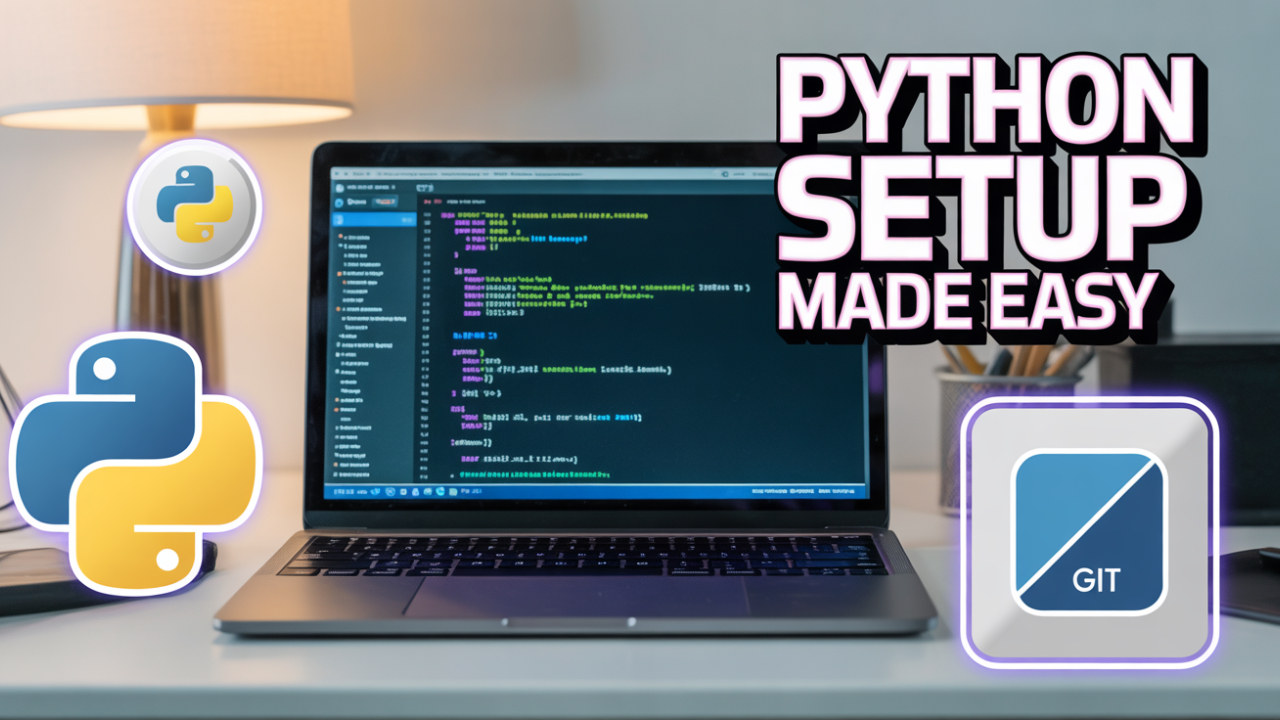
The environment setup involves installing Python and essential libraries, configuring IDEs like VS Code or Jupyter Notebook, and preparing the system for smooth development and execution of the PPE detection model.
Installing Python
VS Code setup for Python development
Configuring Jupyter Notebook for interactive coding
Installing essential libraries like TensorFlow
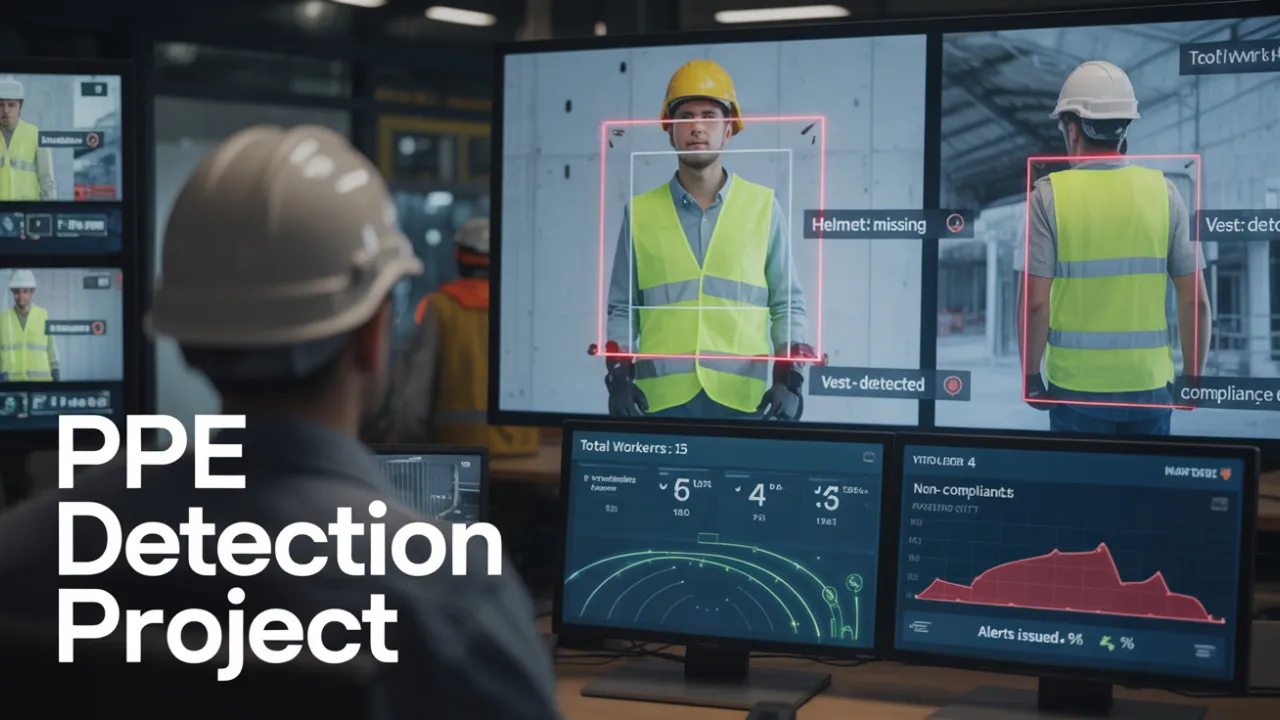
The PPE Detection Project focuses on building an AI-based solution that detects safety gear on workers in real-time. The overview includes the goals, dataset source, tools used, model architecture, and the overall workflow of the system.
Overview of project goals and scope
Builds an AI model to detect PPE like helmets, vests, and masks
Employs datasets annotated with PPE categories
Scalable solution for industrial environments
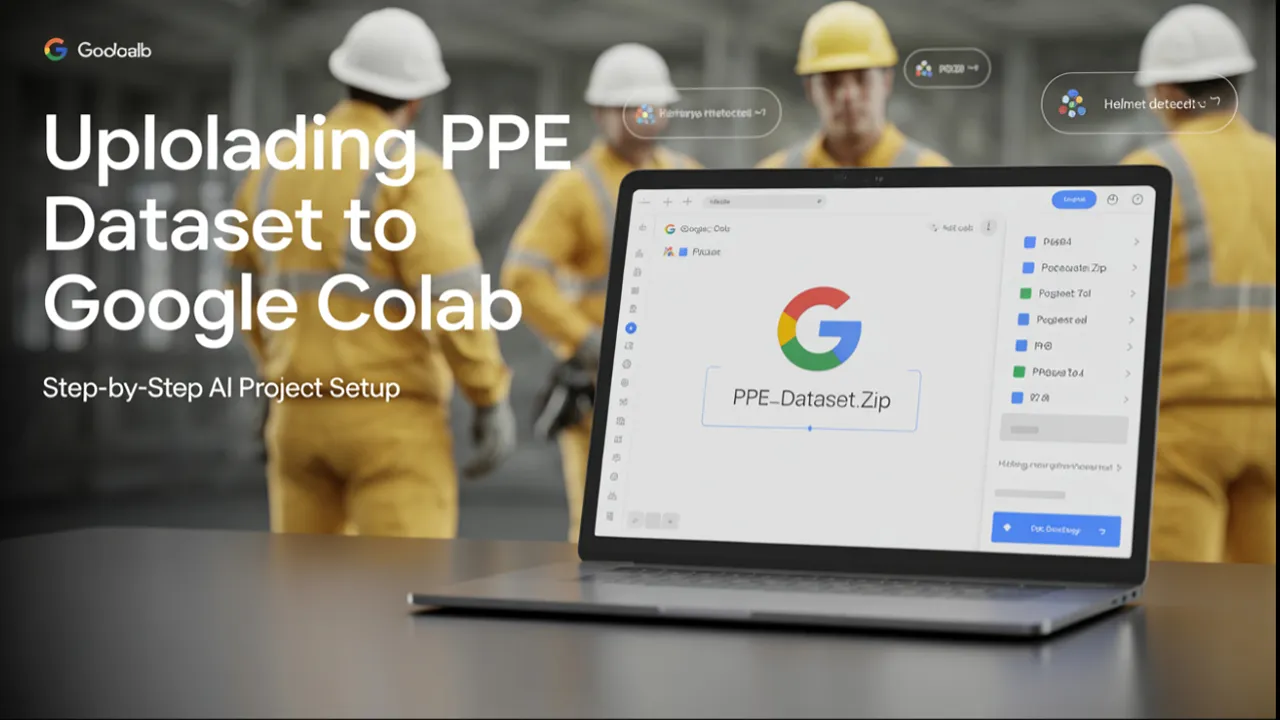
Files such as datasets, model files, or notebooks are uploaded to Google Colab for cloud-based execution. This allows for efficient training and testing of the detection model using GPU acceleration.
Uploading dataset files to Google Colab
Ensuring model weights are accessible for training
Organizing project files in Colab workspace
Leveraging GPU acceleration for faster processing
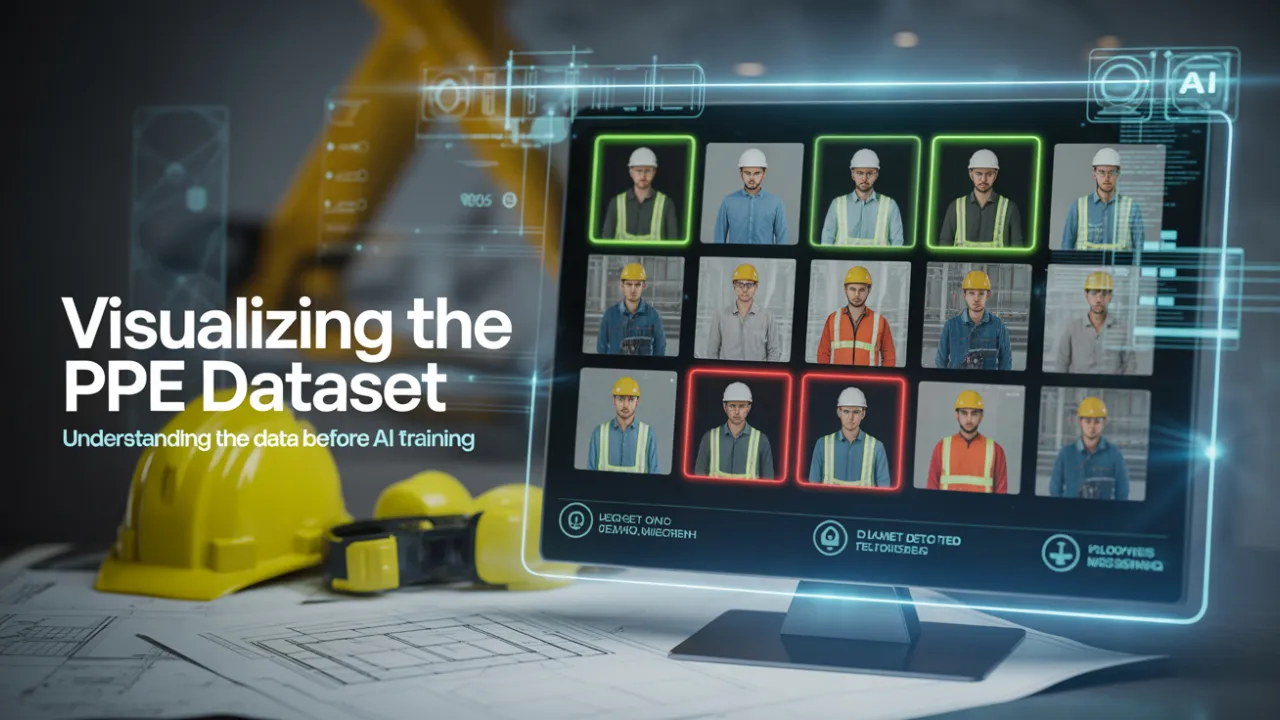
Dataset Visualization involves displaying sample images and class distributions to understand the dataset structure. This step helps verify labeling quality and provides insight into data diversity before training the model.
Visualizing sample images from the dataset
Analyzing class distribution for PPE categories
Verifying annotation quality and data diversity
Using Matplotlib for data visualization
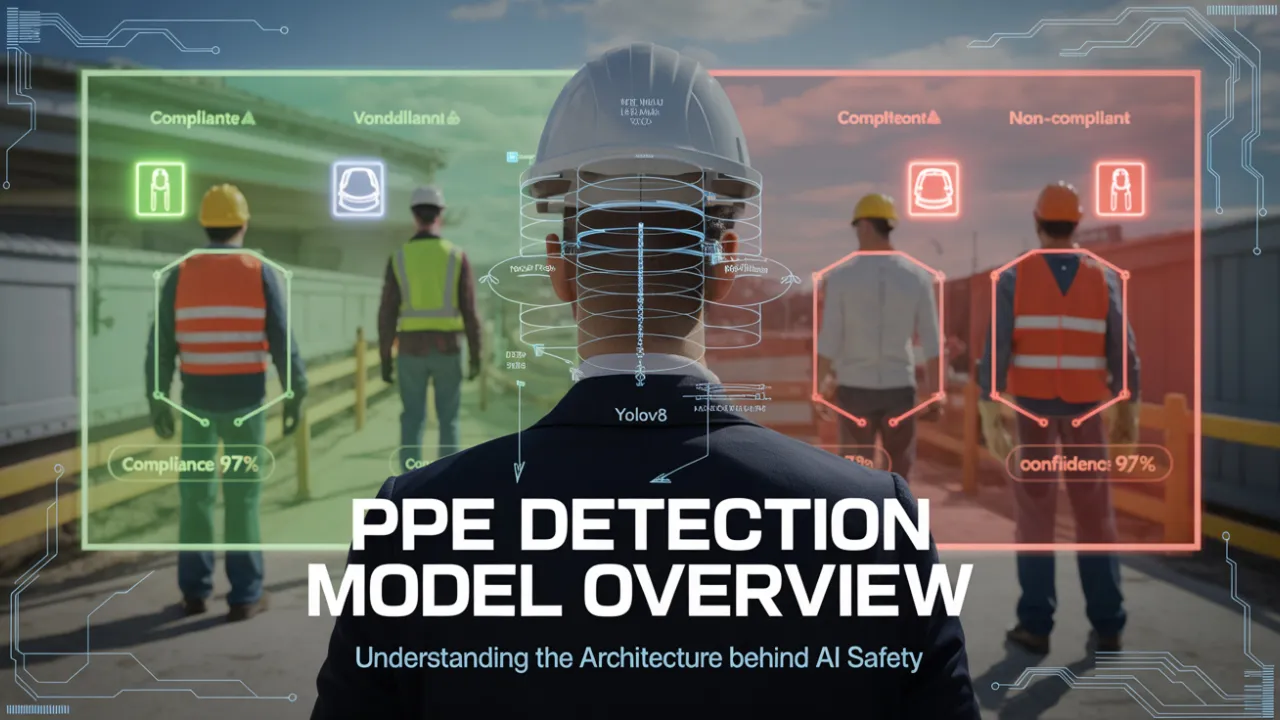
This section describes the deep learning model used for PPE detection, including the architecture (e.g., YOLOv7), input dimensions, number of output classes, and the training methodology adopted for accurate prediction.
Overview of YOLOv7 model architecture
Defining input dimensions and output classes
Training methodology for accurate detection
Optimizing model for real-time performance
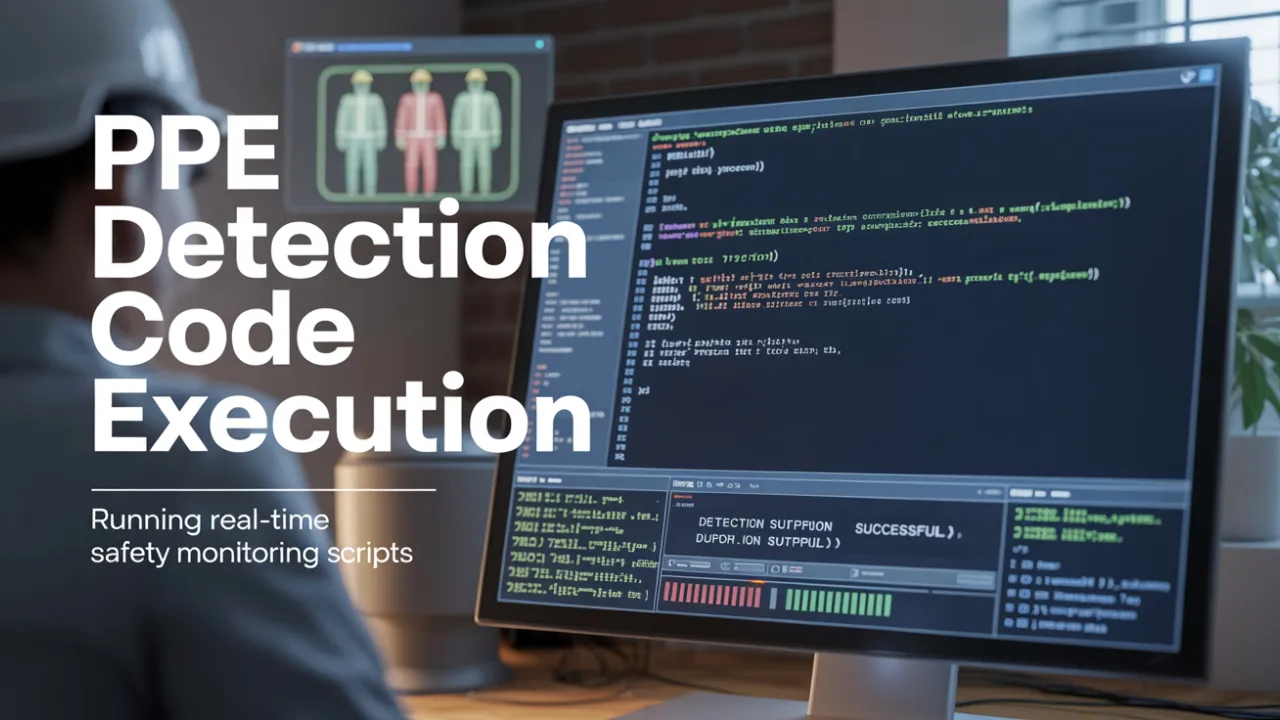
PPE Code Execution covers the implementation and testing of the detection model. It runs the complete pipeline—loading the model, processing inputs, detecting PPE items, and displaying results with bounding boxes.
Loading the trained PPE detection model
Processing input images for inference
Displaying results with bounding boxes
Validating the detection pipeline output
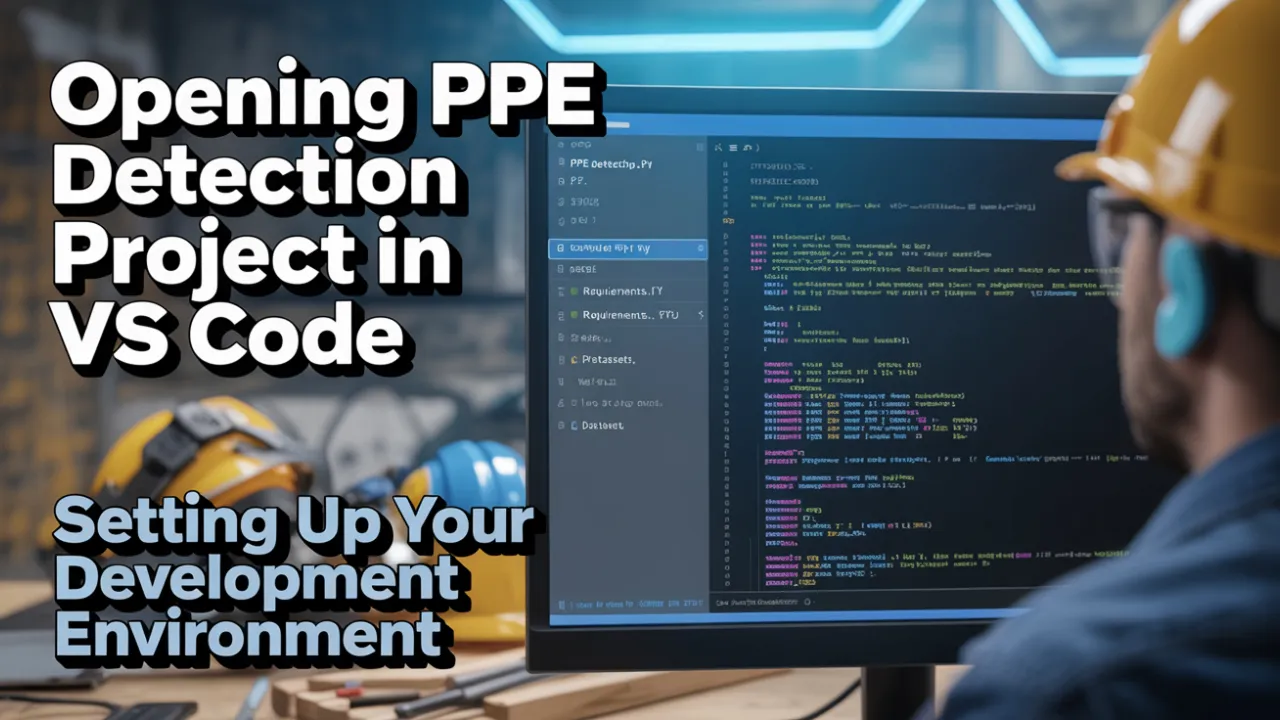
This step involves opening and working on the project in Visual Studio Code. It includes editing scripts, debugging code, and managing project files in a structured development environment.
Opening project files in VS Code
Editing scripts for PPE detection
Debugging code within VS Code
Organizing project files efficiently
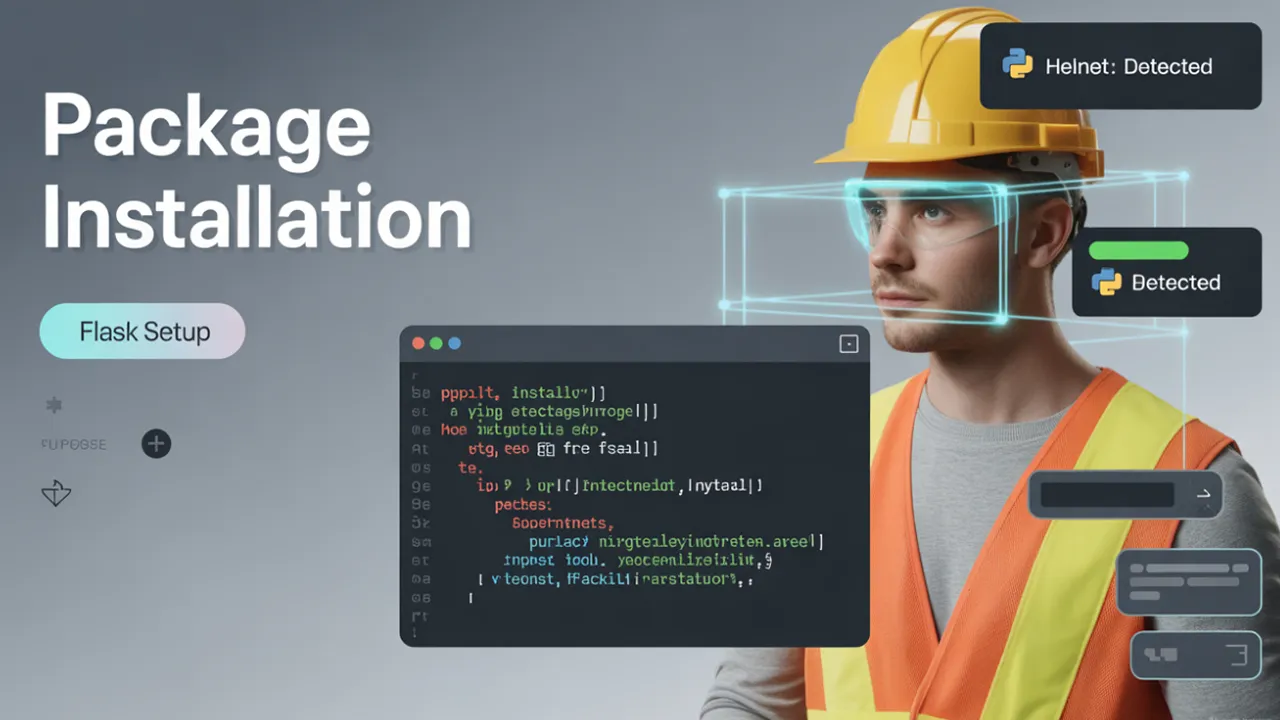
All necessary Python packages and custom modules are imported in this phase. This typically includes libraries like TensorFlow, OpenCV, NumPy, and Matplotlib to support data processing, model handling, and visualization.
Importing TensorFlow for model handling
Using OpenCV for image processing
Incorporating Flask for API development
Leveraging NumPy for data manipulation
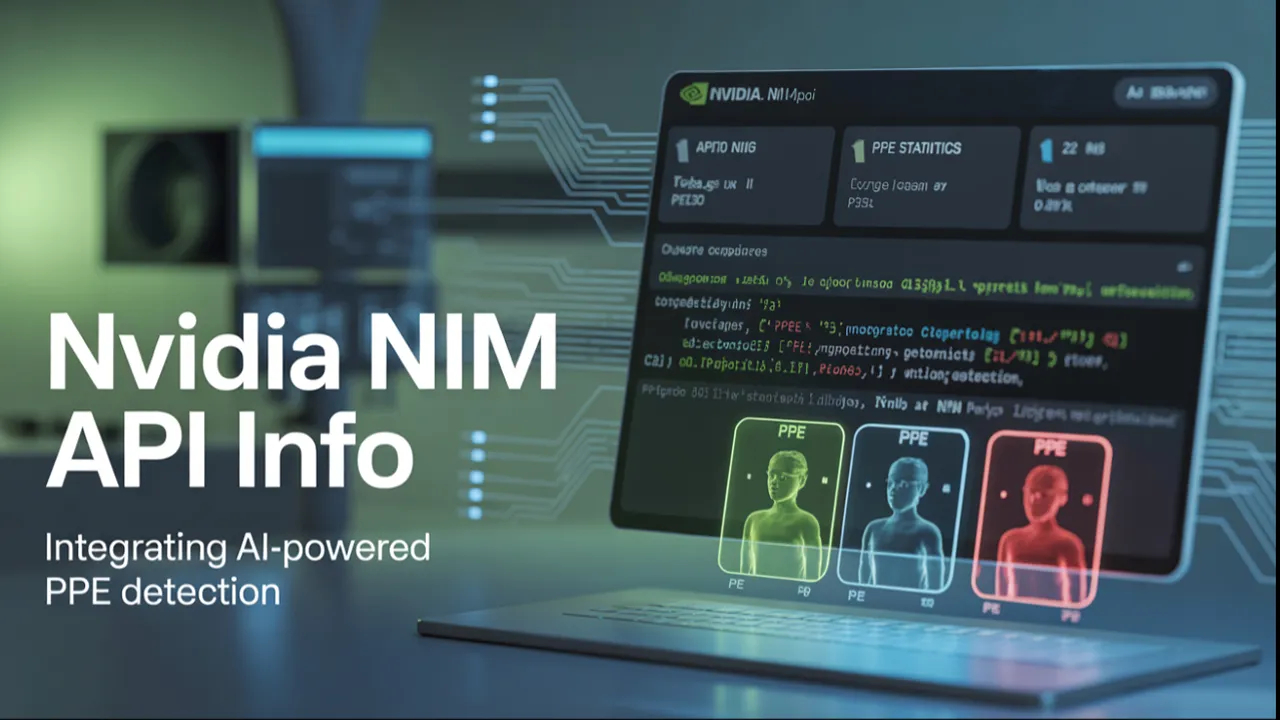
NVIDIA Nim is an AI toolset or interface from NVIDIA. This section outlines its role in enhancing performance for deep learning applications using GPU acceleration, ensuring faster model inference and training.
Introduction to NVIDIA Nim toolset
Leveraging GPU acceleration for training
Optimizing inference with NVIDIA tools
Integrating Nim with PPE detection pipeline
Is This Course Right for You?
Kickstart your AI journey with structured, hands-on learning.
Build a portfolio that recruiters can't ignore.
Add powerful AI/CV features to your apps and software.
Upskill for higher-paying, future-ready tech roles.
Build Smarter, more intelligent applications.
Transition into AI even with zero background.
One-time payment for lifetime access to all course materials and updates
Get hands-on experience with real-world projects designed to sharpen your technical skills and build your confidence. Each project is crafted to help you apply concepts practically, write cleaner code, and prepare for real developer challenges.
Highly recommended for small teams who seek to upgrade their time & perform.
₹ 6720 inclusive of GST ₹ 13999
52% OFF🎁 Coupon Code:
Secure Payment Gateway


You can add this certificate in your Resume! Share it with your LinkedIn network 🚀

Get full project code for 20+ real-world applications – build, customize, and learn hands-on with working solutions.
Join weekly live Q&As to resolve queries and deepen your understanding with real-time support
Enhance your confidence with communication tips, resume builder templates, and personal branding guides tailored for tech careers.
Get feedback, share wins, and grow with other learners in a safe and supportive environment.
Enroll today to claim all bonuses before the offer expires!
Get Instant Access